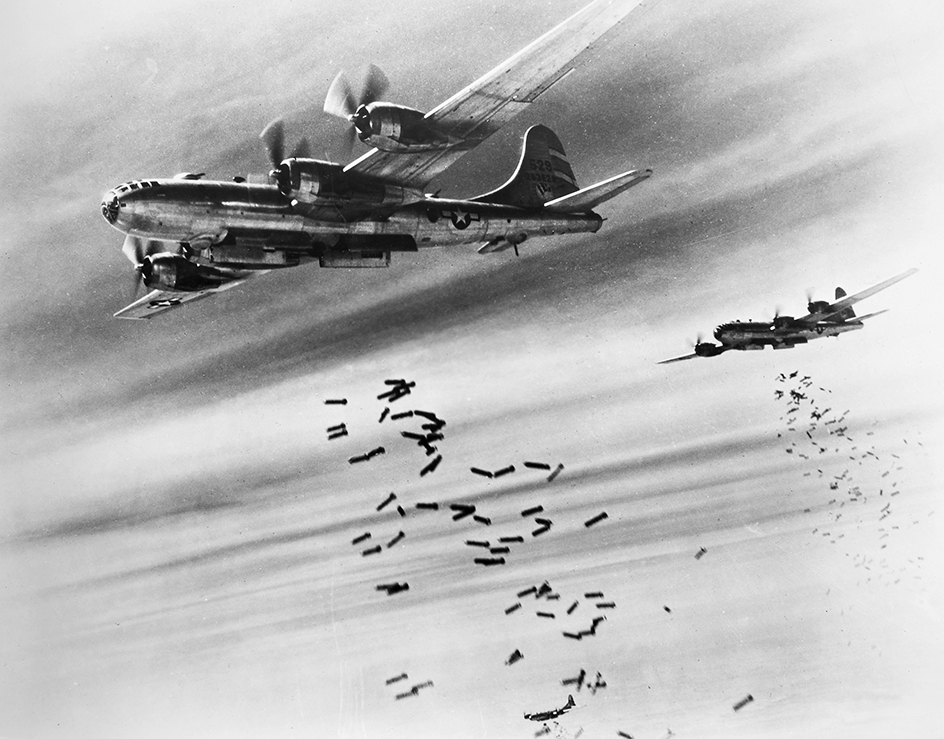B-29 Superfortress was a heavy military airplane used by the United States and its allies during World War II (1939-1945) and the Korean War (1950-1953). It was a four-engine bomber (airplane used to drop explosives) made by the Boeing Company. B is the U.S. military’s designation for a bomber. The name Superfortress came from an earlier Boeing bomber, the B-17 Flying Fortress . The B-29 is famous for having dropped atomic bombs on Japan at the end of World War II.

Boeing first tested B-29’s in 1942. The planes flew in combat missions out of India and China in June 1944. The B-29 had several new features, including remote-controlled machine guns and a pressurized cabin, which protected the crew from low outside air pressure and temperature. The bomber carried as many as 12 heavy machine guns, 10 crew members, and up to 20,000 pounds (9,072 kilograms) of bombs. The plane flew at a top speed of about 365 miles (587 kilometers) per hour. It could reach a maximum altitude of more than 30,000 feet (9,144 meters). It had a range of more than 5,800 miles (9,334 kilometers).
Most B-29’s were used against Japanese targets in the Pacific during World War II. Many islands—including Saipan, Guam, and Tinian—served as B-29 air bases. American B-29’s often dropped incendiary (fire-producing) bombs that set Japanese cities aflame. Raids routinely consisted of hundreds of Superfortresses. On Aug. 6, 1945, a B-29 named Enola Gay dropped an atomic bomb on the Japanese city of Hiroshima. On August 9, the B-29 Bockscar dropped a second atomic bomb on Nagasaki. On Sept. 2, 1945, Japan signed an official statement of surrender. 
After the war, B-29’s were used for rescue duty and other purposes. In 1947, a B-29 participated in the first supersonic (faster than the speed of sound) flight. A Bell X-1 rocket plane airdropped from beneath a B-29 “mothership” reached a speed of more than 800 miles (1,287 kilometers) per hour. B-29’s flew combat missions in Korea from 1950 to 1953. The last B-29 squadron retired from service in 1960. 
See also Boeing Company ; Bomber ; Enola Gay ; Saipan, Battle of .
